HSPA8
-
Official Full Name
heat shock 70kDa protein 8
-
Overview
This gene encodes a member of the heat shock protein 70 family, which contains both heat-inducible and constitutively expressed members. This protein belongs to the latter group, which are also referred to as heat-shock cognate proteins. It functions as a chaperone, and binds to nascent polypeptides to facilitate correct folding. It also functions as an ATPase in the disassembly of clathrin-coated vesicles during transport of membrane components through the cell. Alternatively spliced transcript variants encoding different isoforms have been found for this gene. -
Synonyms
2410008N15Rik; Constitutive heat shock protein 70; Heat shock 70 kDa protein 8; Heat shock 70kD protein 10; Heat shock 70kD protein 8; Heat shock 70kDa protein 8; Heat shock cognate 71 kDa protein; Heat shock cognate 71 kDa protein.; Heat shock cognate protein 54; Heat shock cognate protein 71 kDa; Heat shock cognate protein 71-kDa; Heat shock protein 8; Heat shock protein A8; Heat-shock70-KD protein 10, formerly; <br/>HSC54; HSC71; Hsc73; HSP71; HSP73; HSP7C_HUMAN; HSPA10; HSPA8; LAP1; Lipopolysaccharide associated protein 1; LPS associated protein 1; LPS associated protein; MGC102007; MGC106514; MGC114311; MGC118485; MGC131511; MGC29929; N-myristoyltransferase inhibitor protein 71; NIP71;
- Recombinant Proteins
- Cell & Tissue Lysates
- Protein Pre-coupled Magnetic Beads
- Bovine
- Cattle
- Chicken
- Human
- Mouse
- Rat
- Rhesus Macaque
- Zebrafish
- E. coli
- E.coli
- HEK293
- HEK293T
- Human
- In Vitro Cell Free System
- Mammalian Cell
- Mammalian cells
- Wheat Germ
- Yeast
- C
- His
- Flag
- GST
- His (Fc)
- Avi
- His|MBP
- MYC
- DDK
- N/A
- N
- Background
- Quality Guarantee
- Case Study
- Involved Pathway
- Protein Function
- Interacting Protein
- HSPA8 Related Articles
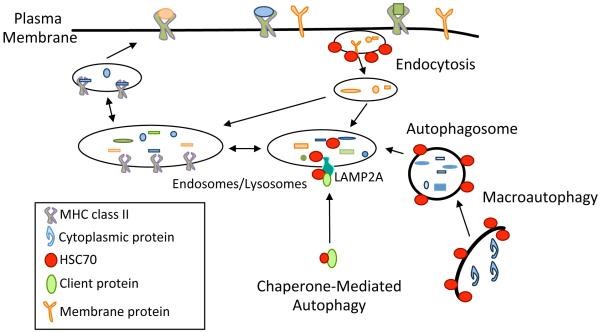
Fig1. The role of HSC70 in MHC class II antigen trafficking and presentation. (Sarah N Deffit, 2015)
What is HSPA8 protein?
HSPA8 (heat shock protein family A (Hsp70) member 8) gene is a protein coding gene which situated on the long arm of chromosome 11 at locus 11q24. HSPA8, also known as HSC70, belongs to the heat shock protein 70 family which contains both heat-inducible and constitutively expressed members. The latter are called heat-shock cognate proteins. This protein is a heat-shock cognate protein. HSPA8 binds to nascent polypeptides to facilitate correct folding. The HSPA8 protein is consisted of 646 amino acids and its molecular mass is approximately 70.9 kDa.
What is the function of HSPA8 protein?
The HSPA8 protein is a versatile molecular chaperone whose main function is to help other proteins fold, assemble, locate, and degrade properly. It is one of the key factors in cells' response to environmental stress (such as high temperature, oxidative stress, etc.) and protects cells from damage by maintaining protein homeostasis. HSPA8 is also involved in regulating cell signaling and immune responses, maintaining cell health by recognizing misfolded or damaged proteins and promoting their repair or removal.
HSPA8 Related Signaling Pathway
When cells are subjected to external stimuli (such as heat shock, oxidative stress, drugs, etc.) leading to abnormal folding and aggregation of proteins, HSPA8 is activated and participates in the refolding and aggregation of misfolded proteins. HSPA8 is associated with autophagy protein, which is involved in regulating the process of autophagy. HSPA8 is involved in the regulation of various signaling pathways, affecting cell survival and apoptosis, cell proliferation and differentiation, such as the Wnt/β-Catenin signaling pathway.
HSPA8 Related Diseases
HSPA8 expression was up-regulated in a variety of cancers, including colorectal cancer, breast cancer, and gastric cancer. It is involved in the genesis and development of tumors by regulating cell proliferation, apoptosis and autophagy. It is upregulated in neurodegenerative diseases such as Alzheimer's and Parkinson's, and plays a role in some cardiovascular and inflammatory diseases.
Bioapplications of HSPA8
Detection of HSPA8 levels in the body can help diagnose, monitor disease progression, and evaluate treatment effects. Because of its role in tumorigenesis and progression, HSPA8 is considered a potential therapeutic target.
High Purity
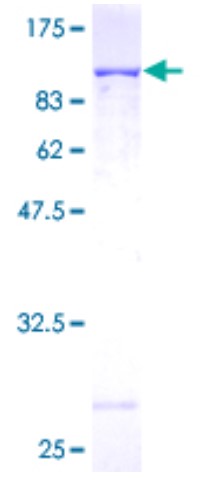
Fig1. SDS-PAGE (HSPA8-5111H) (PROTOCOL for western blot)
.
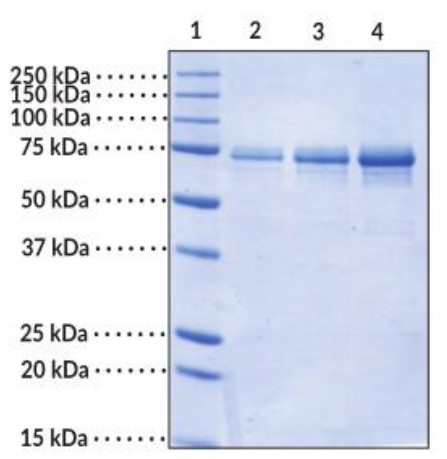
Fig2. SDS-PAGE (HSPA8-018H) (PROTOCOL for western blot)
Case study 1: Lei Wang, 2022
Porcine reproductive and respiratory syndrome virus (PRRSV), a porcine arterivirus, causes severe financial losses to global swine industry. Despite much research, the molecular mechanisms of PRRSV infection remains to be fully elucidated.
In this study, the researchers uncovered the involvement of heat shock protein member 8 (HSPA8) in PRRSV attachment and internalization during infection for the first time. In detail, HSPA8 was identified to interact with PRRSV glycoprotein 4 (GP4). Chemical inhibitors and specific small interference RNAs (siRNAs) targeting HSPA8 significantly suppressed PRRSV infection as indicated by decreased viral RNA abundance, infectivity, and titers. these results demonstrate that HSPA8 is important for PRRSV attachment and internalization, which is a potential target to prevent and control the viral infection.
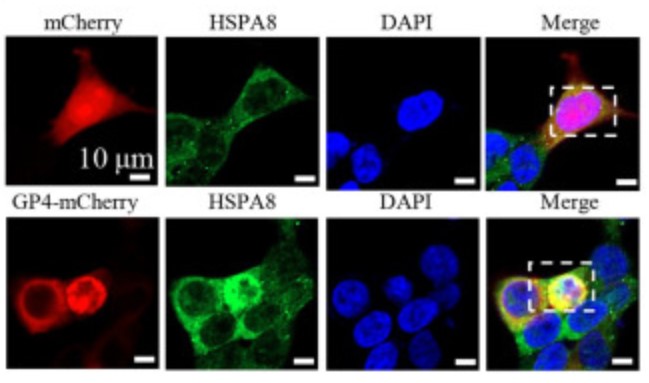
Fig1. GP4-mCherry co-localized with endogenous HSPA8. HEK-293T cells were transfected with the plasmid expressing GP4-mCherry (red) or mCherry (red) for 24 h, and stained with anti-HSPA8 pAbs.
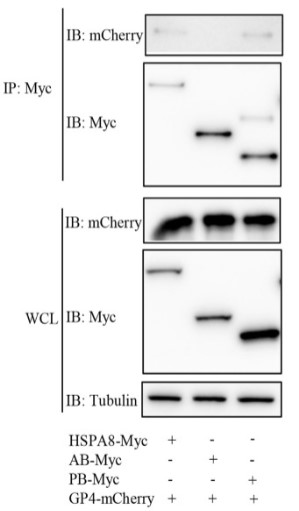
Case study 2: Riccardo Sirtori, 2020
Heat shock protein 70 family was demonstrated to play a critical role in protein homeostasis, a process profoundly impaired in neurodegenerative disorders. Neurodegenerative diseases are characterized by the accumulation of different kind of proteins and the formation of insoluble aggregates which are toxic for neurons. To explore the role of heat shock protein family 70 (in particular HSPA8 and HSPA1A) in the accumulation of proteins implied in neurodegeneration pathogenesis, in this study the researchers verified in human SH-SY5Y neuroblastoma cells how HSPA8 or HSPA1A knock-down can affect protein levels of tau, superoxide dismutase 1 and α-synuclein. The results suggest HSPA8 can play an important role in the homeostasis of tau, superoxide dismutase 1 and α-synuclein and in the balance between α-synuclein oligomeric and monomeric forms.
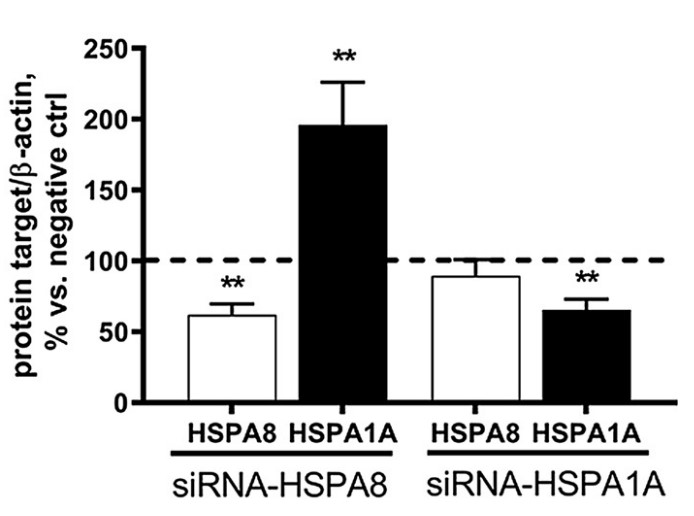
Fig3. siRNA-mediated knock-down of HSPA8 and HSPA1A in SH-SY5Y cell line. Relative protein levels of HSPA8 and HSPA1A after silencing of HSPA8 or HSPA1A.
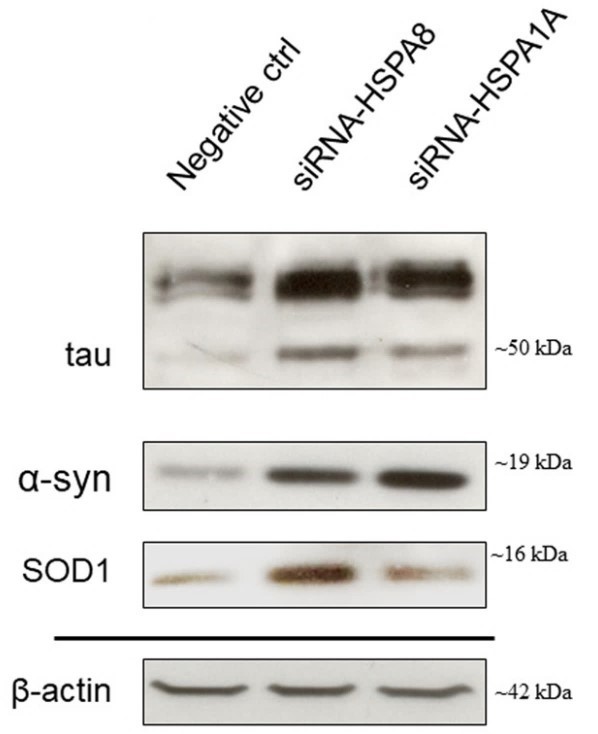
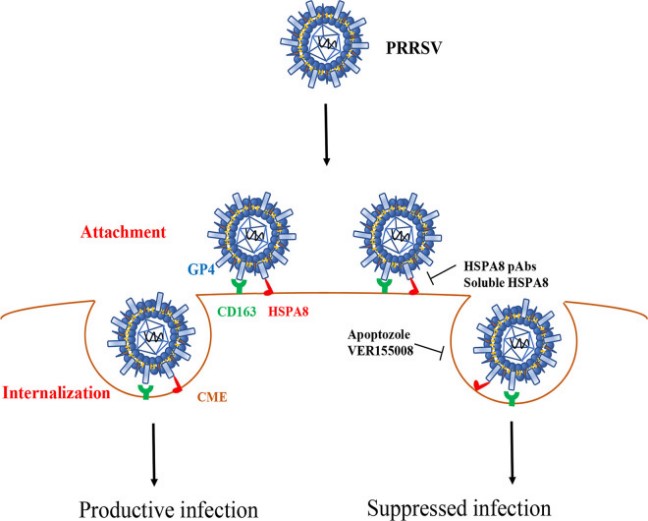
Fig1. Model depicts the involvement of HSPA8 in PRRSV attachment and internalization. HSPA8 functions as a co-factor for PRRSV infection. (Lei Wang, 2022)
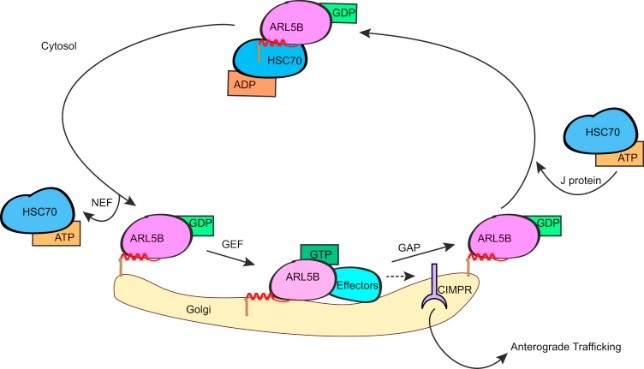
Fig2. Proposed model for HSC70-mediated Golgi association of ARL5B. (Ebsy Jaimon, 2021)
HSPA8 involved in several pathways and played different roles in them. We selected most pathways HSPA8 participated on our site, such as Spliceosome, MAPK signaling pathway, Protein processing in endoplasmic reticulum, which may be useful for your reference. Also, other proteins which involved in the same pathway with HSPA8 were listed below. Creative BioMart supplied nearly all the proteins listed, you can search them on our site.
| Pathway Name | Pathway Related Protein |
|---|---|
| Spliceosome | THOC4;RBM22;CRNKL1;SRSF9;SNRPD3L;SNRPG;HSPA6;PPIL1;LSM3 |
| MAPK signaling pathway | CACNA1SA;FOS;NLK;PPM1NA;FGF20B;CD14;GADD45BA;MAX;PRKCBB |
| Protein processing in endoplasmic reticulum | MOGS;HSP90AB1;MAPK10;XBP1;RAD23A;NFE2L2A;DAD1;ATF6;CUL1 |
| Endocytosis | SMURF2;SPG21;CHMP1B;HSP70;GRK7;ARR3A;HLA-F;ARPC5L;LDLRAP1B |
| Antigen processing and presentation | HSPA5;KLRC4;KIR2DS2;CANX;NFYC;HLA-DRB1;HSPA4;HLA-DPA1;HLA-DRB3 |
| Estrogen signaling pathway | GPR30;PRKACG;KRAS;CALML3;RAF1;ATF4;FKBP5;AKT2;HSPA6 |
| Legionellosis | TLR2;CYCS;VCP;CASP8;CXCL2;CLK1;C3;MYD88;BCL2L13 |
| Toxoplasmosis | BIRC7;IKBKG;H2-AA;IRGM;CASP8;LAMC1;TNF;LAMA4;STAT1 |
| Measles | CLEC4M;PIK3R2;IRAK4;CCND1;Fasl;PIK3CD;TAB2;IFNB1;TNFRSF10B |
| Influenza A | FASLG;HLA-DPA1;OAS1A;TNF;HLA-DMB;IFNA17;HLA-DOB;PML;IL12B |
| Epstein-Barr virus infection | PSMD11;STAT3;TBPL2;MAPK8;AKT2;TRAF5;RBPJ;PSMD3;HSPA1A |
HSPA8 has several biochemical functions, for example, ATP binding, ATPase activity, ATPase activity, coupled. Some of the functions are cooperated with other proteins, some of the functions could acted by HSPA8 itself. We selected most functions HSPA8 had, and list some proteins which have the same functions with HSPA8. You can find most of the proteins on our site.
| Function | Related Protein |
|---|---|
| ATP binding | ATP6V1B1;GUK1;UBE2D4;CKMB;ABCE1;AK9;ATAD3A;CDC34B;CCT5 |
| ATPase activity | KIF6;PSMC2;KIF27;KIF12;CHD1L;KIF13B;TOR1B;CARNS1;ABCG2D |
| ATPase activity, coupled | PEX1;MYO1E;HSPA1A;CCT8;HSPA1B;VPS4B;VPS4A;HSPA6;HSPA8 |
| C3HC4-type RING finger domain binding | KCNH2;HSPA1A;DNAJA1;HSPA8;PINK1;HSPA1B |
| G-protein coupled receptor binding | RSPO2;GNAV1;USP20;UCN3L;PICK1;FCN1;PSAP;HSPA8;SAA1 |
| MHC class II protein complex binding | HLA-DMA;HLA-DOA;MS4A1;HLA-DRA;HLA-DMB;CD81;ANXA11;PKM;HSP90AB1 |
| enzyme binding | ACAT1;ANK1;GSTM3;STUB1;CBS;TSPAN33;RPS2;NKX2-1;YWHAE |
| heat shock protein binding | NFKBIA;FKBP5;CDC37L1;DNAJA2;NFKB1;GPR37;IRAK1;LMAN2;PACRG |
| poly(A) RNA binding | SRRT;TRMT1;BUD13;PUF60;SYF2;NARG1;IMP3;UTP23;MTIF2 |
| protein binding | AACS;DOT1L;PTCH1;FANCI;TALDO1;PARD6A;GLUD1;CKS1B;TXNDC11 |
| ubiquitin protein ligase binding | NKD2;HSPA1B;AMBRA1;VCL;TSG101;LRPPRC;UBE2Z;KCNQ3;TCP1 |
| unfolded protein binding | DNAJB4;HSPD1;DNAJB11;RUVBL2;DNAJB6;UGGT1;AIPL1;HSP104;CCT7 |
HSPA8 has direct interactions with proteins and molecules. Those interactions were detected by several methods such as yeast two hybrid, co-IP, pull-down and so on. We selected proteins and molecules interacted with HSPA8 here. Most of them are supplied by our site. Hope this information will be useful for your research of HSPA8.
STUB1; LRRK2; HSPBP1; EGFR
- Q&As
- Reviews
Q&As (5)
Ask a questionHSPA8 is a central player in the heat shock response, assisting in the refolding of denatured proteins. It modulates downstream pathways such as HSF1 activation, orchestrating a cellular survival response.
HSPA8 plays a role in neurodegenerative diseases, mitigating protein aggregation and neuronal dysfunction. Its chaperone activity is crucial for maintaining protein homeostasis in the nervous system.
HSPA8 exhibits anti-apoptotic functions by interacting with pro-apoptotic proteins and preventing their activation. Its role in apoptosis regulation contributes to cell survival during stress.
HSPA8 is involved in autophagy, facilitating the clearance of misfolded proteins and damaged organelles. It interacts with autophagy receptors, promoting their recognition by autophagosomes.
HSPA8 participates in antigen presentation and modulates immune cell functions. It chaperones antigens for presentation on major histocompatibility complexes, influencing immune recognition and response.
Customer Reviews (3)
Write a reviewThe lab product's precision and quality are noteworthy.
The customer service team was accommodating, and the delivery exceeded my expectations.
This lab product is synonymous with excellence.
Ask a Question for All HSPA8 Products
Required fields are marked with *
My Review for All HSPA8 Products
Required fields are marked with *


